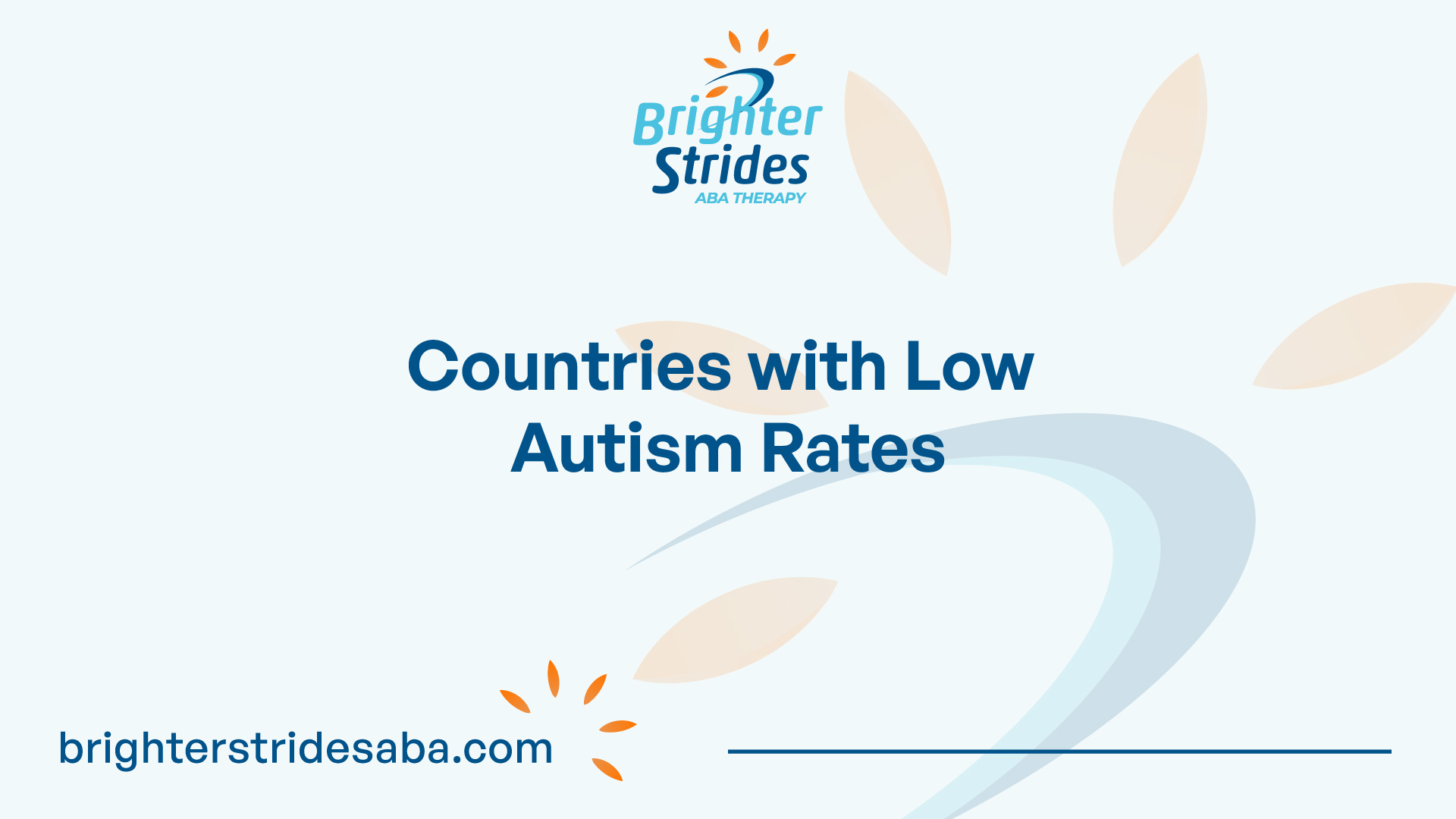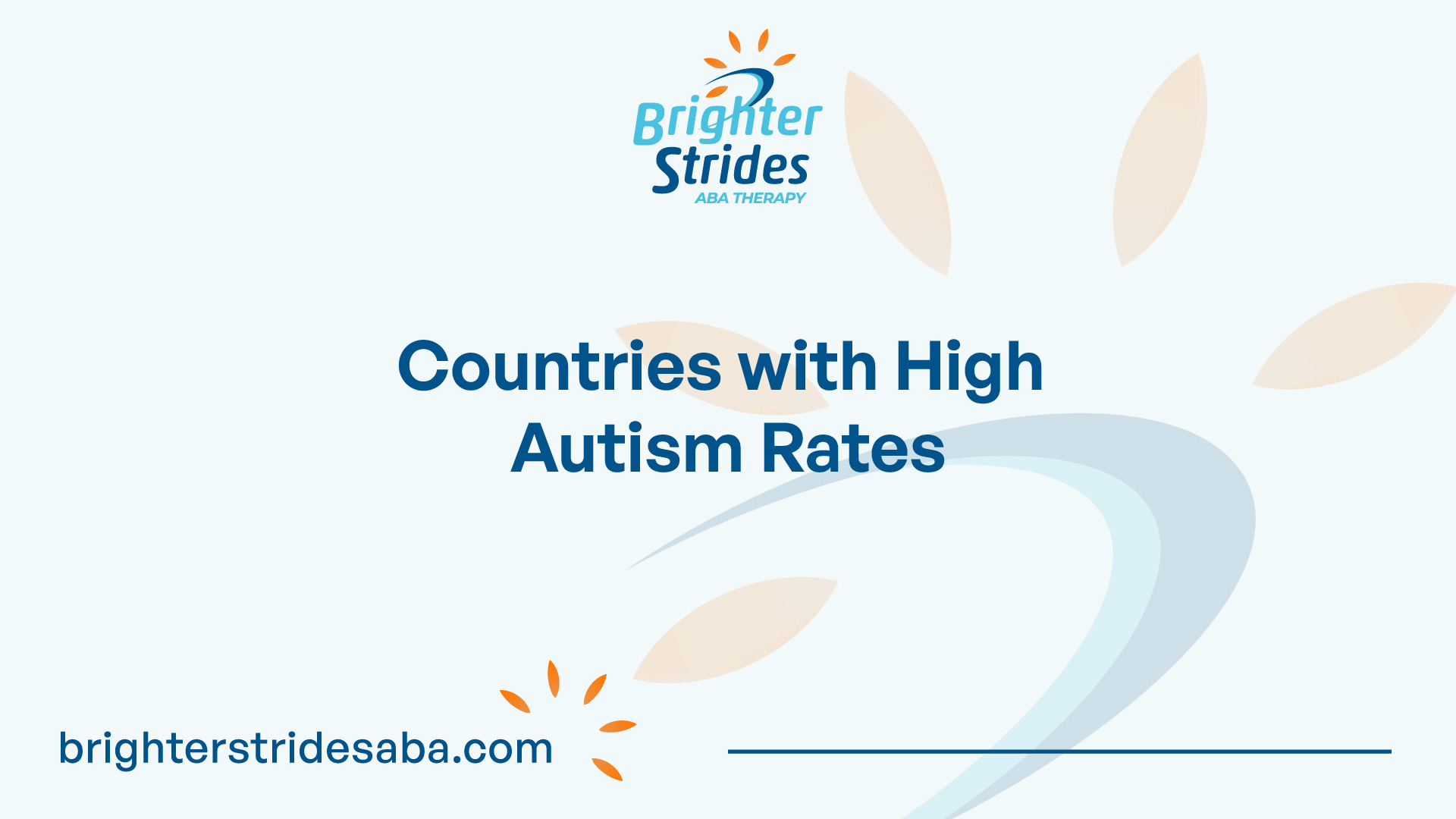Global Autism Prevalence
Understanding the global prevalence of autism is essential to gain insights into the scope and impact of Autism Spectrum Disorder (ASD) worldwide. This section will explore the rates of autism and the various factors that influence its prevalence.
Read about: A Closer Look at Autism Prevalence in North Carolina

Understanding Autism Rates
Autism rates vary significantly across different countries and regions. According to the World Health Organization, the prevalence of autism in many low- and middle-income countries is unknown. However, research studies have provided valuable insights into the prevalence rates of ASD in certain countries.
A meta-analysis of 99 estimates from 71 studies reported a median prevalence of 100 individuals with autism per 10,000 people, with a wide range of values from 1.09 per 10,000 to 436.0 per 10,000. It’s important to note that prevalence rates can vary significantly across studies, reflecting the complex nature of autism and the challenges in accurately estimating its prevalence.
Read about: The Indiana Autism Puzzle: Decoding Prevalence Rates
Factors Influencing Prevalence
Various factors contribute to the differences in autism prevalence rates observed across different countries and regions. These factors include:
- Community Awareness and Diagnosis: Variations in community awareness and diagnostic practices can influence the identification and reporting of autism cases. Differences in diagnostic criteria, access to diagnostic services, and cultural attitudes towards autism can impact prevalence rates.
- Service Capacity and Help-Seeking: Disparities in service capacity and the availability of resources for diagnosis and intervention can affect the detection and prevalence of autism. Limited access to healthcare services in certain regions may result in underdiagnosis or underreporting of autism cases.
- Sociodemographic Factors: Sociodemographic factors, such as socioeconomic status, education levels, and urbanization, can influence the prevalence of autism. Studies have shown that higher socioeconomic status and increased access to resources are associated with higher prevalence rates.
- Cultural and Environmental Factors: Cultural beliefs, practices, and environmental factors can also impact the prevalence of autism. Some cultural groups may have different perceptions and understanding of autism, leading to variations in reporting and diagnosis.
It is crucial to recognize that prevalence rates are dynamic and can change over time due to evolving diagnostic criteria, improved awareness, and changes in data collection methods. Continued research and understanding of the factors influencing autism prevalence are essential for developing effective interventions and support systems for individuals with autism worldwide.
By examining the global prevalence of autism and the factors that contribute to its variation, we can gain a better understanding of the complex nature of autism and work towards creating inclusive and supportive environments for individuals on the autism spectrum.
Countries with Low Autism Rates
Autism rates vary across different countries, with some reporting lower prevalence compared to others. Two regions that have been noted for their relatively low autism rates are Europe and certain countries in Asia.

European Perspectives
Among the developed countries in Europe, France stands out with the lowest reported autism rates. According to World Population Review, France has an autism rate of 69.3 per 10,000 people or approximately 1 in 144 people. It’s important to note that these rates are still indicative of individuals with autism in the population, albeit at lower reported levels.
Cultural Influences in Asia
Countries in Asia, such as Japan, have reported relatively lower prevalence rates of autism compared to Western countries. This variation may be attributed to cultural factors, variations in diagnostic practices, and differences in awareness and recognition of autism within the country. In Japan, where fitting into society and interdependence are highly valued, there may be a reluctance to label children as different and in need of special education due to concerns about social harm, prejudice, and stigma [4].
It’s important to note that lower reported prevalence rates in certain regions of Asia and Africa, such as Nigeria, may be influenced by limited access to healthcare services, lack of awareness, and challenges in accurate data collection. The prevalence of Autism Spectrum Disorder (ASD) in China is reported to be 0.02%, while in Sweden, it is 3.66% [5]. These differences highlight the complex interplay of various factors in determining autism prevalence rates across different regions.
Understanding the cultural, social, and healthcare contexts within each country is crucial in interpreting and comparing reported autism rates. It’s essential to approach these variations with sensitivity and recognize that they can be influenced by a range of factors, including diagnostic criteria, awareness, access to services, and cultural perceptions of autism.

Countries with High Autism Rates
When examining autism prevalence worldwide, it is evident that certain countries report higher rates compared to others. The increased rates can be attributed to a combination of factors, including improved diagnostic services and genetic and environmental influences.
Impact of Diagnostic Services
Countries with high autism rates often have well-established diagnostic services that contribute to the identification and diagnosis of individuals on the autism spectrum. For example, China currently has the highest reported rate of autism at 2.6% [6]. This can be attributed, in part, to improved awareness, increased access to diagnostic services, and evolving diagnostic criteria. As diagnostic services become more accessible and comprehensive, more individuals with autism are identified and included in prevalence studies.
Genetic and Environmental Factors
Genetic and environmental factors also play a role in the higher reported rates of autism in certain countries. Although the exact causes of autism are not fully understood, research suggests that a combination of genetic predisposition and environmental influences contribute to the development of the condition.
For instance, the United States, which reports a higher prevalence of autism compared to many other countries, has ongoing research exploring genetic factors that may contribute to the condition. Studies have identified certain gene variants that are associated with an increased risk of autism. These genetic factors, combined with environmental influences, contribute to the higher rates observed in the country [6].
It is important to note that while certain countries report higher rates of autism, it does not imply that autism is absent or nonexistent in other countries. Autism prevalence can vary due to a multitude of factors, including differences in diagnostic practices, awareness, cultural perceptions, and access to healthcare services.
Understanding the factors contributing to high autism rates can aid in the development of interventions, support services, and resources to meet the needs of individuals on the autism spectrum. By continuing to research and identify the various influences on autism prevalence, countries can work towards providing comprehensive support and improving the quality of life for individuals with autism and their families.
Autism Stigma and Cultural Perceptions
In many parts of the world, individuals with autism face stigma and prejudice due to cultural perceptions and lack of understanding. This section explores the stigmatization of autism in different countries and highlights the emergence of the neurodiversity movement.
Stigmatization in Different Countries
The level of stigmatization towards autism can vary significantly across different countries and cultures. Larger and more competent service provisions are more likely to exist in communities where there is a relatively greater level of understanding and awareness towards autism compared to contexts where awareness is lower.
Collectivist cultures, which prioritize the needs of the community over individualism, are generally more likely to stigmatize individuals who deviate from the norm. This is partly because such individuals are more likely to be identified in the community due to high surveillance levels in collectivist cultures [7].
In some African cultures, autism is misunderstood and attributed to witchcraft or poor parenting. This misconception leads to religious interventions, such as exorcism, which are common in rural communities where few services for autistic individuals exist.
Ethnicity also plays a role in the stigmatization of autism. Minority ethnic communities in countries like England often face poorer access to healthcare, including autism services. Language and cultural differences can make it challenging for healthcare and autism service providers to identify and diagnose autism within these communities.
Neurodiversity Movement
In response to the stigmatization of autism, some adults with Autism Spectrum Disorder (ASD) have led a neurodiversity movement. This movement celebrates autism as a natural variation of the human condition and opposes efforts to cure it. Advocates of the neurodiversity movement emphasize the importance of providing supports and accommodations for people with ASD, rather than focusing on treatments that would erase harmless autistic behaviors. The movement promotes acceptance of differences as part of human diversity [4].
By raising awareness, challenging stereotypes, and promoting acceptance, the neurodiversity movement aims to create a more inclusive society for individuals with autism. It advocates for understanding and support that respects the unique strengths and challenges of people with autism, fostering an environment where they can thrive.
Addressing the stigma surrounding autism and promoting cultural understanding are crucial steps towards creating a society that embraces neurodiversity and provides equal opportunities for individuals with autism to reach their full potential.
Disparities in Autism Prevalence
In exploring the prevalence of autism, it is important to consider the disparities that exist across different populations and communities. Two significant factors contributing to disparities in autism prevalence are racial disparities and access to healthcare services.
Racial Disparities
Research suggests that there are racial disparities in autism prevalence. Studies, particularly in the United States, have shown that autism diagnosis rates vary among different racial and ethnic groups, with minorities initially being underdiagnosed. Over time, there has been an increase in autism diagnosis rates among minority populations, indicating a “catch-up” effect in diagnosis. This suggests that initial underdiagnosis may have contributed to the perception of lower prevalence in certain racial and ethnic groups.
It is important to address racial disparities in autism prevalence to ensure that all individuals, regardless of their racial or ethnic background, have equal access to diagnosis, support, and services. Efforts must be made to improve awareness and understanding of autism within all communities, as larger and more competent service provisions are more likely to exist in communities with greater levels of awareness and understanding.
Access to Healthcare Services
Access to healthcare services plays a significant role in the diagnosis and support of individuals with autism. Disparities in access to healthcare services can contribute to variations in autism prevalence.
Ethnicity is a key determinant of health inequalities, and minority ethnic communities often face poorer access to healthcare, including autism services. Language and cultural differences can pose challenges for healthcare and autism service providers in identifying and diagnosing autism within these communities [7].
In some cultures, such as certain African communities, autism may be conceptualized as a result of witchcraft or poor parenting. This can lead to religious interventions, such as exorcism, being common in rural communities where few services for autistic children exist [7].
Addressing disparities in access to healthcare services requires targeted efforts to improve accessibility, cultural competence, and language support within healthcare systems. This can help ensure that individuals from all backgrounds have equal opportunities to receive timely and appropriate diagnosis, support, and interventions.
Recognizing and addressing disparities in autism prevalence is crucial to promote equity and improve outcomes for individuals with autism across diverse populations. Efforts should focus on raising awareness, reducing stigma, improving access to healthcare and autism services, and fostering culturally sensitive approaches to diagnosis and support.
Trends in Autism Prevalence
Understanding the trends in autism prevalence is crucial for gaining insights into the global impact of Autism Spectrum Disorder (ASD). Over time, there has been a notable increase in the measured prevalence of autism worldwide, along with changes in diagnostic criteria contributing to these trends.
Global Increase in Prevalence
Recent studies have consistently reported an increase in measured prevalence of autism, both at the country level and for specific subgroups. Countries such as the United States, South Korea, Taiwan, France, and Australia have observed rising prevalence rates. The estimated global prevalence of Autism Spectrum Disorder is around 0.6%, with a confidence interval of 0.4-1%.
It’s important to note that the rise in prevalence can be attributed to a combination of factors rather than a single cause. Increased community awareness, improved public health responses, changes in diagnostic criteria, and enhanced identification of autism in previously under-diagnosed populations have all contributed to the observed increase. These factors have led to expanded diagnostic boundaries and the identification of milder forms of autism.
Changing Diagnostic Criteria
Changes in diagnostic criteria have played a significant role in the observed trends in autism prevalence. Diagnostic criteria have evolved over time, leading to broader definitions of autism and expanded inclusion criteria. This has allowed for the identification and diagnosis of individuals who may not have met previous criteria.
The broadening of diagnostic boundaries has facilitated the recognition and diagnosis of individuals with milder forms of autism. This has resulted in increased prevalence rates as more individuals are being identified and included in prevalence studies.
It is important to consider that prevalence rates can vary significantly across studies due to the complex and dynamic nature of autism prevalence. Factors such as community awareness, service availability, help-seeking behaviors, and sociodemographic factors can all influence the estimates.
Understanding the trends in autism prevalence and the factors contributing to these trends is crucial for policymakers, healthcare professionals, and researchers. The evolving understanding of autism and its prevalence helps guide the development of support systems, interventions, and services to meet the needs of individuals on the autism spectrum.
References
- https://www.who.int/news-room/fact-sheets/detail/autism-spectrum-disorders
- https://www.ncbi.nlm.nih.gov/pmc/articles/PMC9310578/
- https://www.crossrivertherapy.com/autism/is-there-a-country-with-no-autism
- https://www.kennedykrieger.org/stories/interactive-autism-network-ian/autism-stigma
- https://www.goldstarrehab.com/parent-resources/is-there-a-country-with-no-autism
- https://www.discoveryaba.com/aba-therapy/what-country-has-the-highest-rate-of-autism
- https://www.autism.org.uk/advice-and-guidance/professional-practice/autism-stigma

 We've just released an article!
Check out our blog!
We've just released an article!
Check out our blog!



